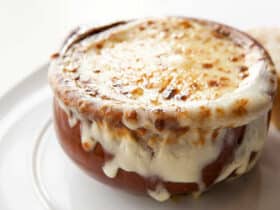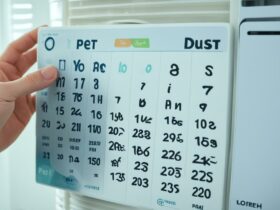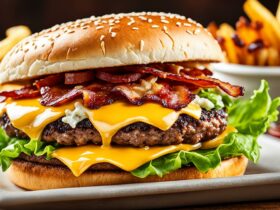Contents
Understanding Lobster Seasons
What is Lobster Season?
Lobster season refers to the specific time of the year when lobster fishing is permitted. It is usually regulated to protect the sustainability of lobster populations and ensure that the lobsters have had sufficient time to reproduce and grow. During this season, lobster enthusiasts can engage in recreational or commercial fishing, depending on local regulations.Why Are There Specific Dates?
The specific dates for lobster season vary depending on the region and the species of lobster found in that area. These dates are determined based on scientific research and monitoring of the lobster population. By setting specific dates, authorities can control the fishing activity and prevent overfishing, allowing the lobsters to replenish their numbers and maintain a healthy ecosystem.Lobster Season Dates by Region
East Coast Lobster Season
On the East Coast of the United States, lobster season typically begins in late spring and continues through the summer months. Specific dates may vary slightly between states and even different regions within the same state. It’s essential to check with local authorities or fishery management organizations for the exact dates in your area.West Coast Lobster Season
The West Coast, including California, has its own lobster season, which usually starts in early October and extends until mid-March. The cool waters of the Pacific Ocean provide an ideal habitat for spiny lobsters, making it a popular destination for lobster fishing enthusiasts.Regulations and Restrictions
Legal Size Limit
To protect juvenile lobsters and ensure their survival, there are usually legal size limits in place during lobster season. This means that you can only keep lobsters that meet or exceed a specific size. The minimum legal size varies depending on the region, so it’s crucial to familiarize yourself with the local regulations to avoid any violations.Bag and Possession Limits
Bag and possession limits refer to the maximum number of lobsters you can catch and keep in a single day or possess at any given time. These limits also help prevent overfishing and ensure fair access to lobsters for all fishermen. The bag and possession limits may differ depending on whether you have a recreational or commercial fishing license.Fishing Methods
Different regions may have specific rules regarding the fishing methods allowed during lobster season. Common methods include traps, hoop nets, and snorkeling. It’s essential to follow the prescribed fishing methods to maintain the sustainability of the lobster population and comply with local regulations.Lobster Season Preparation Tips
Researching Local Regulations
Before heading out for lobster fishing, it’s vital to research and understand the local regulations specific to your area. These regulations may include season dates, size limits, bag and possession limits, and fishing methods allowed. Adhering to these rules ensures a sustainable lobster fishery and helps protect the ecosystem.Obtaining the Necessary Permits
Depending on your location and the purpose of your fishing activity, you may need to obtain the appropriate permits. These permits could include a recreational fishing license or a commercial fishing license. Be sure to check with the relevant authorities to understand the permit requirements and application procedures.Gathering the Right Gear
To have a successful and enjoyable lobster fishing experience, it’s essential to gather the right gear. This may include lobster traps or nets, gauges to measure the size of the lobsters, gloves for handling, and a bucket or container to hold the caught lobsters. Additionally, it’s advisable to bring appropriate clothing, sunscreen, and plenty of water and snacks for your fishing trip.Best Practices for Catch-and-Release
Proper Handling Techniques
If you catch a lobster that doesn’t meet the legal size limit or exceeds your possession limit, it’s crucial to handle it properly for a safe release. Handle the lobster gently, avoiding any harm or injury to both yourself and the lobster. Release it back into the water carefully, allowing it to swim away freely.Ethical Considerations
Lobster fishing should always be carried out with respect for the environment and the welfare of the lobsters. Avoid unnecessary harm to other marine species while fishing, and refrain from engaging in activities that may damage the habitat. Practicing ethical fishing ensures the long-term sustainability of the lobster population and helps preserve the beauty of the oceans.The Joy of Lobster Season
Delicious Recipes to Try
Once you’ve caught your fresh lobsters, it’s time to savor their exquisite flavors. Lobsters can be prepared in various mouthwatering ways, such as grilled lobster tails, lobster bisque, lobster rolls, or classic boiled lobster with melted butter. Explore different recipes to make the most of your catch and create memorable dining experiences.Hosting a Lobster Feast
Lobster season presents an excellent opportunity to gather friends and family for a delightful lobster feast. Organize a gathering where everyone can enjoy the delicious taste of fresh lobsters together. Create a festive atmosphere, prepare a variety of lobster dishes, and share the joy of this seasonal delicacy.Grilling Seafood 101: Tips and Recipes
Conclusion
Lobster season is an exciting time for seafood lovers, offering a chance to engage in lobster fishing and indulge in delightful culinary experiences. By understanding the dates and regulations surrounding lobster season, you can ensure sustainable fishing practices and compliance with local laws. Remember to research local regulations, obtain the necessary permits, and follow the best practices for catch-and-release. Enjoy the thrill of lobster season while preserving the future of this cherished seafood.Is Craft Beer a Good Pairing for Lobster?
Craft beer is a great pairing for lobster, and a beginner’s guide to craft beer tasting can enhance the experience. The distinct flavors of craft beer, like hoppy IPAs or malty stouts, can complement the delicate, sweet taste of lobster meat. With the guide’s help, you can learn to appreciate the nuances of different beer styles and choose the perfect brew to enhance your lobster feast.











